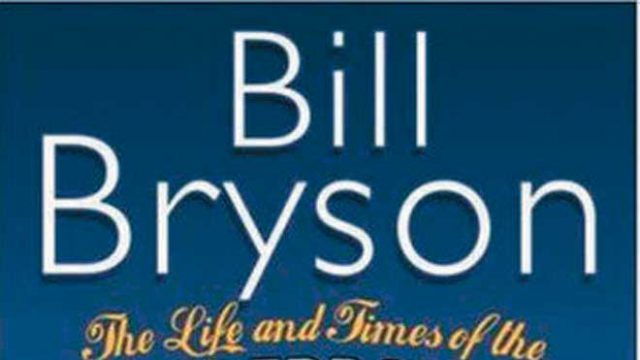The 1950s in America are typically summed up in pictures of perfect middle-class families, happily conformist patriotism and a rabid anti-communism. Mostly though, they are seen as having served to cultivate an idealism that would erupt in outraged discontent in the 1960s. The Life and Times of the Thunderbolt Kid by Bill Bryson(Doubleday, Rs 870) is about his memoir of growing up in that not-so-turbulent decade. For Bryson, the ‘50s were about promise — that flying cars were just around that corner and that it wouldn’t be long before everyone was taking vacations on Mars.
The Bryson that emerges in the memoir is an unfailingly normal little boy with little angst. If, like the best memoirs, his story is also a history of his times, his attitude to it is not that of the historian but of the tour guide. In the past, he has walked his readers through England where he now lives (Notes from a Small Island), across the Appalachian Trail (A Walk in the Woods), and through the history of science (A Short History of Nearly Everything) with the brisk manner of the intelligent guide with much to show and little time.
Here, he walks us through Des Moines, Iowa where he grew up. He shows us the people: eccentric parents, funny neighbours, the weird kid at school and the pretty girl in class. And the places: the absurdly pretentious Tea Room, the cafeteria with atomic toilets (no one thought about cancer then) and the first supermarkets of newly consumerist America. And there’s Bryson himself, special in spite of his apparent normality. In fact, Bryson is the Thunderbolt Kid, reducing nasty grown-ups to ash at the speed of thought.
Bryson comes across as intelligent but not bookish, well-read but not pedantic, likeable but not ‘button-cute’, non-conformist but hardly rebellious. He is living in the Age of Excitement and the affluent society of the ‘50s offers much to be excited about — restaurants to cater to every palate, shopping places for every kind of wallet and the recently-opened Disneyland, to which young Bryson is driven by his normally thriftier father (who was, we are assured, the best baseball reporter ever). Bryson’s mother receives an affectionate treatment that forgives her sometimes-alarming scantiness.
On the one hand, Bryson’s prose is feather-light, never less than a complete pleasure to read and frequently laugh-out-loud funny. On the other, he is clearly not on a nostalgia trip with fellow children of the ‘50s. It quickly emerges that he is making a point. Through his catalogue of old eccentricities; he retains an acute awareness of the rumblings in the background of his American idyll. The Cold War is never far away (his school class must go through nuclear emergency drills), racism is provoking the civil rights movement into prominence and the façade of family life is beginning to fall apart. For all this, Bryson’s is a terrifyingly innocent world. Parents allow their children to play in pesticide spray — a good sprinkling of DDT will do them good, surely — and there is none of the paranoia about the future that afflicts 21st- century America (how exciting the phrase must have sounded then). Indeed, it is the adult-ness of contemporary America that worries Bryson, the fact that there is no sense of possibility any more, and that the future (global warming? the end of civilisation?) is not worth getting excited about.
Quite a different book could have emerged from the material. This one would be a story of the repression behind the idyllic family, of American bigotry and of failed American foreign policy. Bryson, however, is not the one to write it. The book he wrote has a sharp enough sense of irony to hint at the one he didn’t. The bottom-line being that the 1950s might be a nice place to visit, but one wouldn’t want to live there. Bryson, for one, moved out a long time ago.




